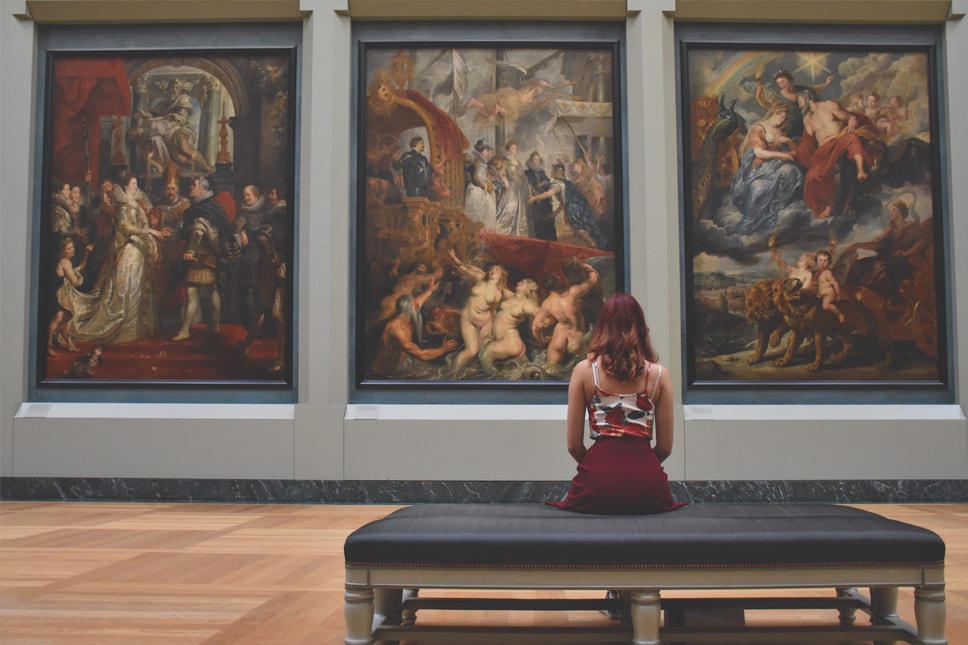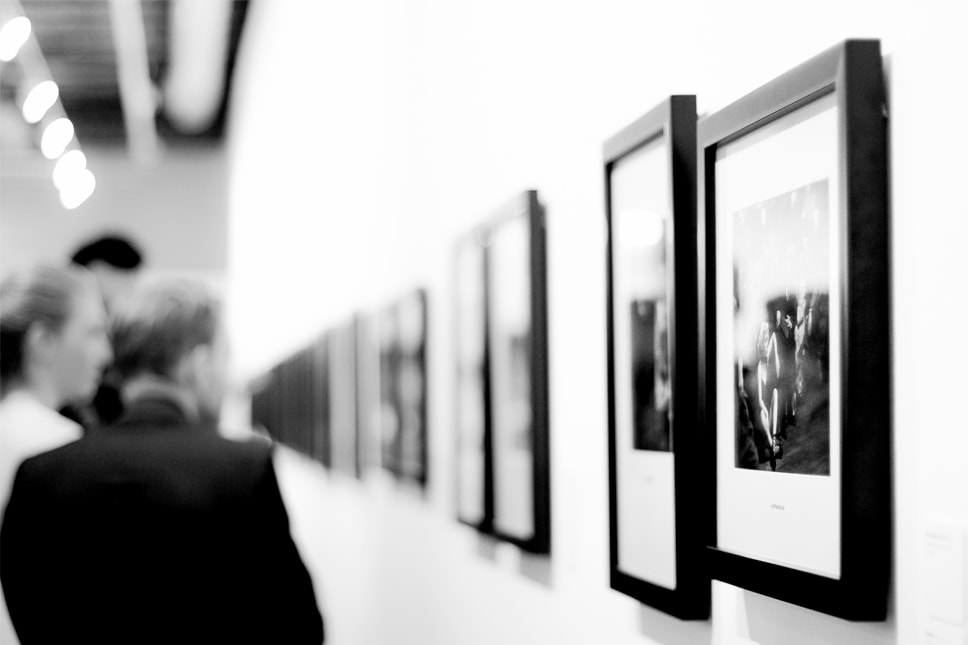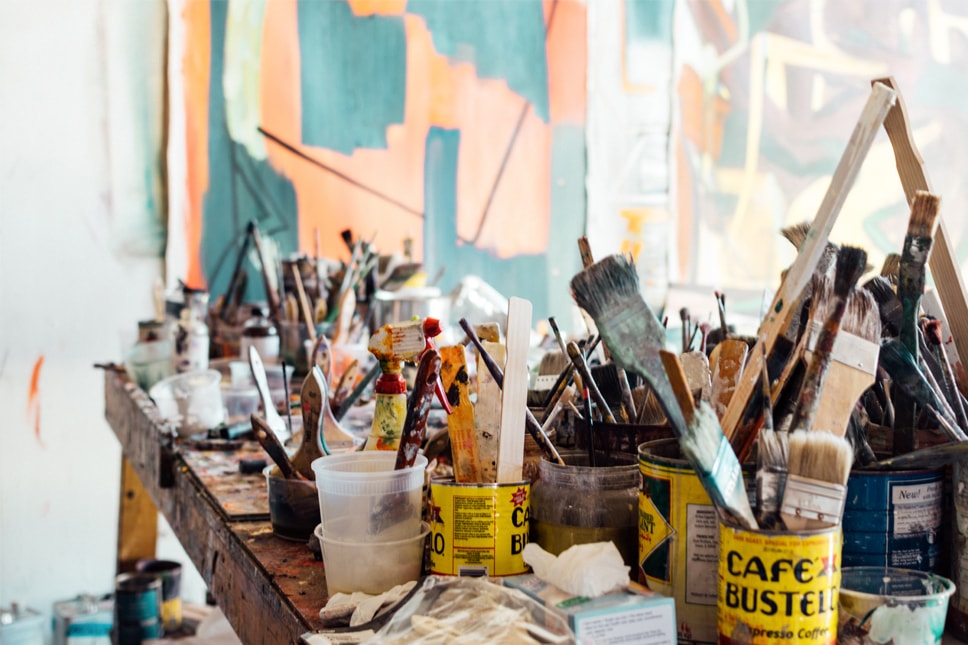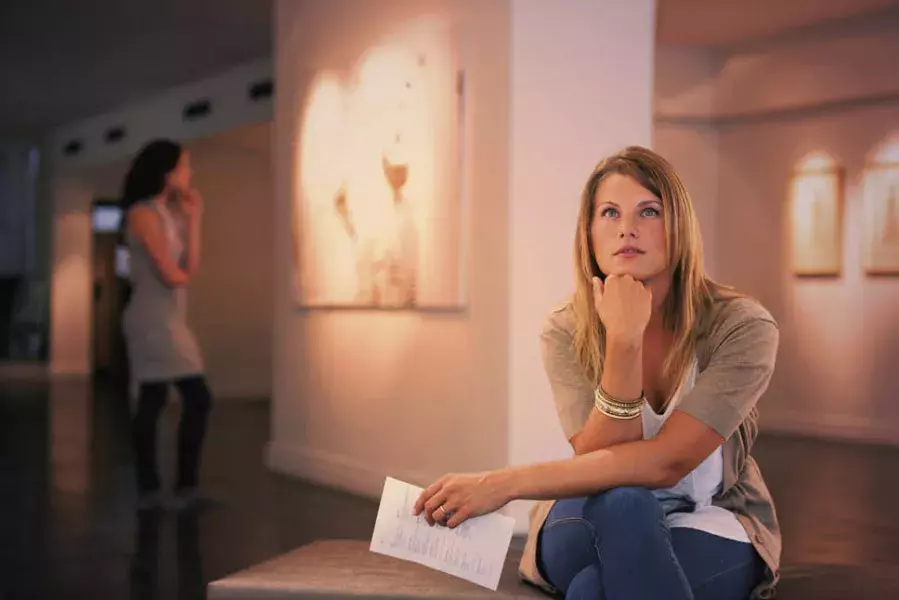Art can take us on a journey to faraway lands or into the distant past. It can conjure strong emotions and deep thoughts, or simply dazzle us with its visual brilliance. Everyone's reaction to art may be different, but its ability to impact us is unquestioned.
This impact is because of the strong effect art can have on the human brain. Viewing, analyzing, and creating art stimulates the brain in substantial and long-lasting ways. For anyone interested in ongoing growth through a lifetime of learning, the cultural and intellectual benefits of art can serve as a powerful tool that you can leverage on your journey to personal fulfillment. Find out how both viewing and making art can make positive impacts on your brain.
Art & Your Brain

A painting of a person is not a person. And yet, our brains are able to immediately recognize paint on a canvas, made up with meticulous lines and shading, as representing a human being. In fact, our brains try to recognize faces in almost everything we see. Take a look at an ordinary wall outlet, for instance. If you glance at it for just a moment, you'll see a surprised facial expression. But why? It turns out that the brain is remarkably adept at discerning familiarity and meaning from patterns, abstract forms, and incomplete information. Each time you look at a piece of art, your brain is working to make sense of the visual information it's receiving. From highly lifelike portraits to abstract collections of rectangles, looking at art stimulates the brain and puts our innate knack for organizing patterns and making sense of shapes to use.
Beyond the brain's skill at making sense of what we're seeing, the brain actually goes through changes when we look at a beautiful art piece. In fact, according to The Telegraph, looking at a gorgeous painting, sculpture, or other artwork increases blood flow to the brain by as much as 10% -- the equivalent of looking at someone you love.
Still, viewing art isn't just about making sense of the shapes. Rather than just thinking art is beautiful, we want to place ourselves into the artwork. This placement occurs through a process known as embodied cognition, in which mirror neurons in the brain turn things like action, movement, and energy you see in art into actual emotions you can feel. Embodied cognition starts when you look at a piece of art. The more you analyze the piece, the more you place yourself within the scene and can actually feel the quality of the works. For instance, viewers of a drip painting by Jackson Pollock can often feel like they are the ones flinging the paint onto the canvas. Other art, such as a piece depicting a desert landscape, can make you feel the effects of the hot sun, the sand beneath your feet, and the sound of a soft breeze. When you feel embodied cognition, you're able to appreciate the artwork even more.
Effectively Viewing Art

Your brain's reaction to the visual stimuli of a piece of artwork is only the first part of a multi-step process. Understanding how to look at art lets you make the most out of the experience by keeping your brain active and involved. There are a few things you can do to analyze a piece and effectively put your brain to use:
- Describe what you're seeing, and what you aren't.
- Think about the piece, what it may represent, and what it says about the artist.
- Discuss the work with others, and compare it to other works as well as your own life experiences.
The more time you spend analyzing a piece of art, the more you are able to stimulate both unconscious and conscious brain functions. Doing so can increase your analytical and problem-solving skills in everyday life. If you aren't sure where you can go to practice looking at art with an analytical eye, check out these places that may be near you:
- Local museums. Learn about the museums in your area. Some may even offer evening events that you can attend with your friends.
- Craft and artisan fairs. See what your community is creating! Local artwork is a great place to get started on appreciating art.
- Galleries. Oftentimes, galleries will open their doors to the public to show off new exhibits. See if there are any galleries near you that open their doors weekly or monthly.
- Buy an art book. Head over to your favorite book store and buy an art book. Look at one piece a day with the intent of analyzing and learning as much as you can about each piece.
- Find a documentary. Queue up your favorite streaming app and search for a documentary about art. You may be surprised at what you learn!
Creating Art

Making art invigorates the brain in ways that are distinct from merely viewing art. Studies have credited the production of visual art with increases in functional connectivity in the brain along with enhanced activation of the visual cortex. Researchers liken creating art with exercise for the brain, and even suggest that similar to how physical exercise aids the body, creating art may help to keep the mind sharp and lucid well into old age.
Beyond that, creating art can actually help you cope with stressful and difficult situations you face in everyday life. You don't need to be a tried and true artist to make art. Rather, you can get started on destressing, having fun, and creating art by trying:
- Group painting classes. A growing trend, group art classes at local studios and even bars allow you to socialize with friends while creating a beautiful piece of art! Research local group painting classes in your area to find the next event near you.
- Adult coloring books. These help you relax and take away the tension of a stressful day. You can find options with varying levels of difficulty to help you wind down.
- Glass blowing classes. These events are a fun way to learn a new skill! Find a local class to practice making glass roses, bowls, vases, and more.
- Photography. Pick up your camera and snap a few varying angled shots of your home, friends, family, and places you spend your time. Challenge yourself to take a dedicated number of photos per day, or to bring your camera to an unexpected event. You may discover a new perspective!
- Sketch something at your house. Try sitting down for 10 minutes and sketching something you see in your home. Next time, try a 2 minute sketch, then a 30 minute sketch. Changing the rules will challenge your brain and keep the creativity flowing.
- Figure drawing classes. Often found for free in local community centers and art museums, classic figure drawing classes enable you to view the human body from a different perspective.
Beauty may be in the eye of the beholder, but the relationship between art and brainpower is in the eye of hard science. As another item in the toolkit of lifelong learning, an interest in art is a great way to flex your brain while improving your quality life. When you’re ready for your “workout” head over to your local museum or do some online research on artists and their masterpieces.
--
Written by University Staff
